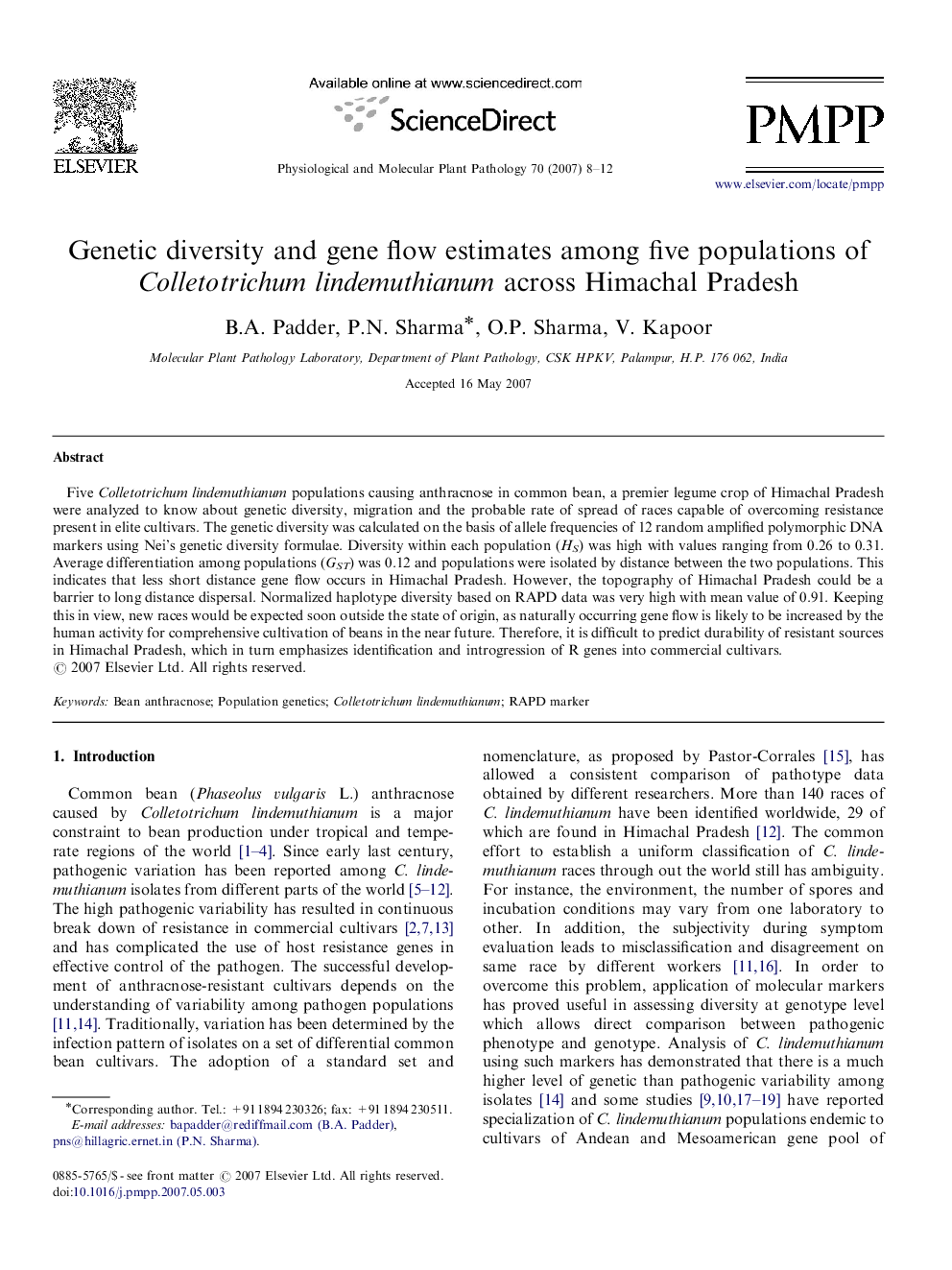| Article ID | Journal | Published Year | Pages | File Type |
|---|---|---|---|---|
| 2836742 | Physiological and Molecular Plant Pathology | 2007 | 5 Pages |
Five Colletotrichum lindemuthianum populations causing anthracnose in common bean, a premier legume crop of Himachal Pradesh were analyzed to know about genetic diversity, migration and the probable rate of spread of races capable of overcoming resistance present in elite cultivars. The genetic diversity was calculated on the basis of allele frequencies of 12 random amplified polymorphic DNA markers using Nei's genetic diversity formulae. Diversity within each population (HS) was high with values ranging from 0.26 to 0.31. Average differentiation among populations (GST) was 0.12 and populations were isolated by distance between the two populations. This indicates that less short distance gene flow occurs in Himachal Pradesh. However, the topography of Himachal Pradesh could be a barrier to long distance dispersal. Normalized haplotype diversity based on RAPD data was very high with mean value of 0.91. Keeping this in view, new races would be expected soon outside the state of origin, as naturally occurring gene flow is likely to be increased by the human activity for comprehensive cultivation of beans in the near future. Therefore, it is difficult to predict durability of resistant sources in Himachal Pradesh, which in turn emphasizes identification and introgression of R genes into commercial cultivars.
